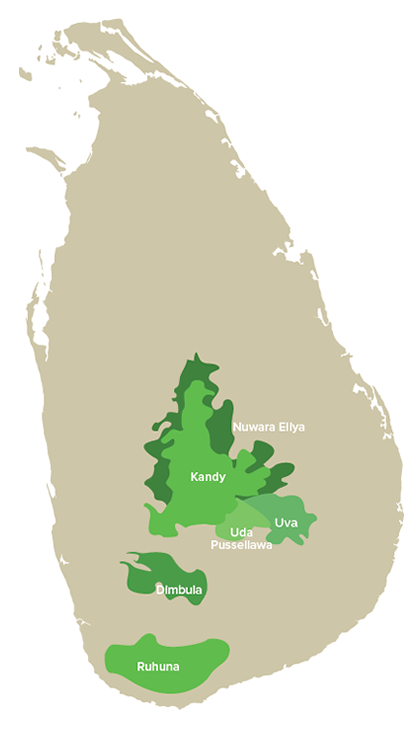The pride of Ceylon tea
Ceylon Tea is popularly known the world over for its aromatic, sensuous flavours and rich colours. This particular tea leaf and its varying grades are largely found in the tea-growing regions of Sri Lanka; predominantly within the lush rolling hills of the island’s central highlands and its southern foothills.
The Central Highlands have become a part of Sri Lanka’s prestigious history and is still a popular destination for tourists visiting the island-nation. Once known to the ancient Sinhalese as Mayarata, (translated to ‘the Country of Illusions’), the central hills are home to many folk-tales and lore regarding thriving Kingdoms made of gold, architectural rock marvels (that still stand today), battles between the Gods and of course the perfect harmony between nature and mankind.
It was after the fall of the Kandyan Kingdom (Sri Lanka’s last remaining stronghold) in 1815 to the British Empire that Coffee-estates became abundant throughout the hills and valleys. This soon led to the realisation of the purity and splendour found in Ceylon Tea, and thus began the journey to produce the ultimate cup of tea.
Premium quality tea hailing from the central and southern regions of Sri Lanka are exported via Union Commodities to its international markets.
Whether sipping Simondou tea after a long day of work or taking in the aroma of a refreshing Shaheena tea; or just taking a moment for yourself with a Richmond tea in hand, all our teas are blended to relax the mind and rejuvenate the soul.

Tea growing regions
Tea production is one of the main sources of foreign exchange for Sri Lanka and accounts for 2% of GDP, contributing over US$1.5 billion in 2013 to the economy of Sri Lanka.
It employs, directly or indirectly, over 1 million people, and in 1995 directly employed 215,338 on tea plantations and estates. In addition, tea planting by smallholders is the source of employment for thousands whilst it is also the main form of livelihoods for tens of thousands of families.
Sri Lanka is the world’s fourth-largest producer of tea.
In 1995, it was the world’s leading exporter of tea (rather than producer), with 23% of the total world export.
The highest production of 340 million kg was recorded in 2013.
The humidity, cool temperatures, and rainfall of the country’s central highlands provide a climate that favours the production of high-quality tea. The tea biomass production itself is higher in low-elevation areas. Such tea is popular in the Middle East. The industry was introduced to the country in 1867 by James Taylor, a British planter who arrived in 1852.
Tea planting under smallholder conditions has become popular in the 1970s.


